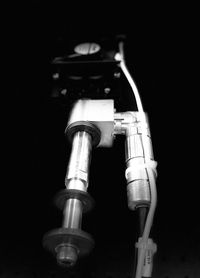Motion Control
One area where Alware is certainly specialized on is motion control. Simple single-axis to very complex multi-axis servo systems are realized with different types of motion controllers. The control software is usually written in LabVIEW with or without the help of low level controller-dependent software.
This low level controller-dependent software usually has its own editor, its own test environment and the ability to upload the written code to the controller. This uploaded code normally contains one or more subprograms which can be addressed and executed from a program in a higher programming language.
Usually DC servo motors with or without a gearbox or linear motors are used. As feedback for DC servomotors, one or more encoders are used and if necessary a tacho generator is added. In order to select the right motor for a specific application, attention is paid to the required torque and speed, the accuracy and the protocol to be executed.
Linear motors are high quality, extremely high efficiency tubular linear motors. This high efficiency means less heat generated and better position accuracy. The simple, clean tubular design makes it easy to install the motor, reducing the footprint and achieving unrivaled force density. Contrary to conventional drive solutions, Linear motors do not require any mechanical transmission elements, which simplifies the design, while reducing wear to almost zero and thus minimizing maintenance.
Before writing the software, every single motor in the setup will be tuned by adjusting the PID parameters to obtain the desired behavior. The servo system can be controlled directly via the PC or Motioncontroller, but it is also possible to have a stand alone system with uploaded software carrying out the desired protocol or movement all by itself.
With modern controllers contouring, the simultaneously controlling of multiple axes, is becoming increasingly common.



